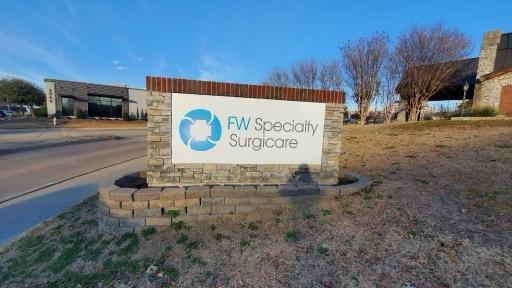 At least 3 million North Americans have glaucoma, but only 50% know they have it! Glaucoma starts off asymptomatic in 95% of cases, and by the time the condition is noticed, the vision loss is irreversible.
At least 3 million North Americans have glaucoma, but only 50% know they have it! Glaucoma starts off asymptomatic in 95% of cases, and by the time the condition is noticed, the vision loss is irreversible.
That’s why regular eye exams are so crucial, even if you don’t suspect a problem. At EYEWORKS Ophthalmology Center, we provide patients with comprehensive eye exams, the latest treatments for eye disease, and other eye services to ensure the best possible outcome — no matter the diagnosis.
But First - What Is Glaucoma?
Glaucoma is a group of eye diseases caused by a buildup of pressure within the eye. The longer the pressure builds, the more damage it causes, especially to the optic nerve.
Without any medical intervention, the nerve will continually deteriorate, resulting in permanent vision loss or blindness.
How Is Glaucoma Detected?
Glaucoma is detected through a comprehensive eye examination. During your exam, your eye doctor will test your eye pressure, examine your optic nerve, and assess your visual field, among other things.
Yearly eye exams (or as often as your eye doctor recommends) are necessary to diagnose and treat glaucoma. And when it comes to glaucoma, early detection is key.
Here are the different ways to test for glaucoma:
- Air Puff Test - A puff of air is used to gently bounce off the front of your eye. The machine then calculates how much resistance your eye displayed to the air puff, revealing the amount of internal eye pressure.
- Tonometer - After applying some numbing drops to your eyes, the eye doctor will gently touch your eye with a small device that measures the eye’s resistance and internal pressure.
- Blue Light Test (Goldmann tonometry) - After inserting numbing drops, your eye doctor will use a device called a slit lamp biomicroscope to slowly move a flat-tipped probe until it gently touches your cornea. Although this method is considered the gold-standard for measuring eye pressure, all methods mentioned here are safe, comfortable, and accurate.
How Is Glaucoma Treated?
While glaucoma cannot be prevented, several treatments can help prevent eye damage and vision loss.
Eye drops
Prescription eye drops are usually the first-line treatment for early stages of glaucoma. These drops are used to help decrease eye pressure by limiting the amount of fluid your eye produces, or by improving how fluid drains from your eye.
Oral medications
Oral medications to lower eye pressure are usually prescribed when eye drops alone are ineffective.
Surgery and other therapies
Aside from eye drops and oral meds, here are some other glaucoma treatments your eye doctor may recommend.
- Laser therapy - Laser trabeculoplasty is used to treat open-angle glaucoma and helps the fluid easily drain from the eye.
- Filtering surgery - this surgical procedure allows fluid to drain from the eye to decrease eye pressure.
- Drainage tubes - a small tube shunt is placed into the eye and acts as a ‘pipe’ for excess fluid drainage.
- Minimally invasive glaucoma surgery (MIGS) - This option tends to cause fewer side effects and complications than standard glaucoma surgeries.
What’s the takeaway?
Glaucoma can be sneaky, so make sure to catch it in its tracks with a yearly eye exam. If glaucoma is detected, EYEWORKS Ophthalmology Center can provide effective treatments and glaucoma management to help preserve your vision.
To schedule your consultation, call us today.
EYEWORKS Ophthalmology Center serves patients from Ft. Worth, Southlake, River Oaks, Benbrook, and throughout Texas.
Q: Who’s at risk of developing glaucoma?
- A: The following are risk factors for developing glaucoma: a family history of the condition, being over the age of 60, diabetes, heart disease, previous eye injury or surgery, having thin corneas, high blood pressure, sickle cell anemia, and extreme nearsightedness or farsightedness.
Q: What are the first signs of glaucoma?
- A: The early stages often have no symptoms, but as the condition progresses, the patient may notice patchy spots in the peripheral vision or tunnel vision. The more severe type of glaucoma (acute closed angle glaucoma) may cause symptoms like severe eye pain, headache, nausea, vomiting, blurred vision, and red eyes. Promptly seek medical care if you experience any of these symptoms.







